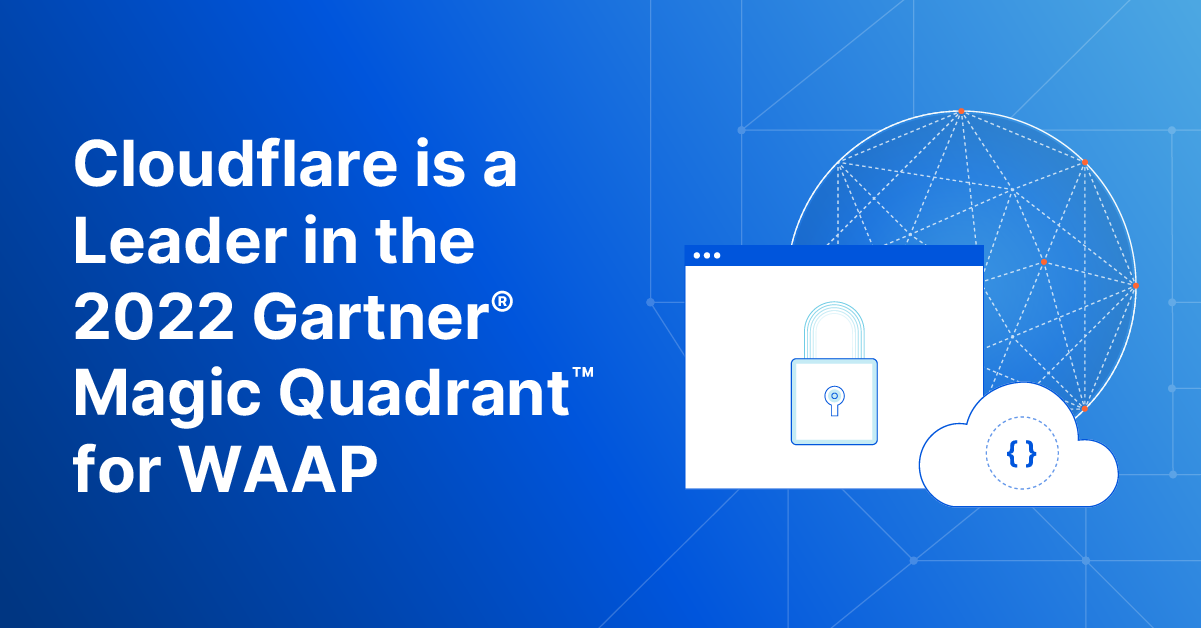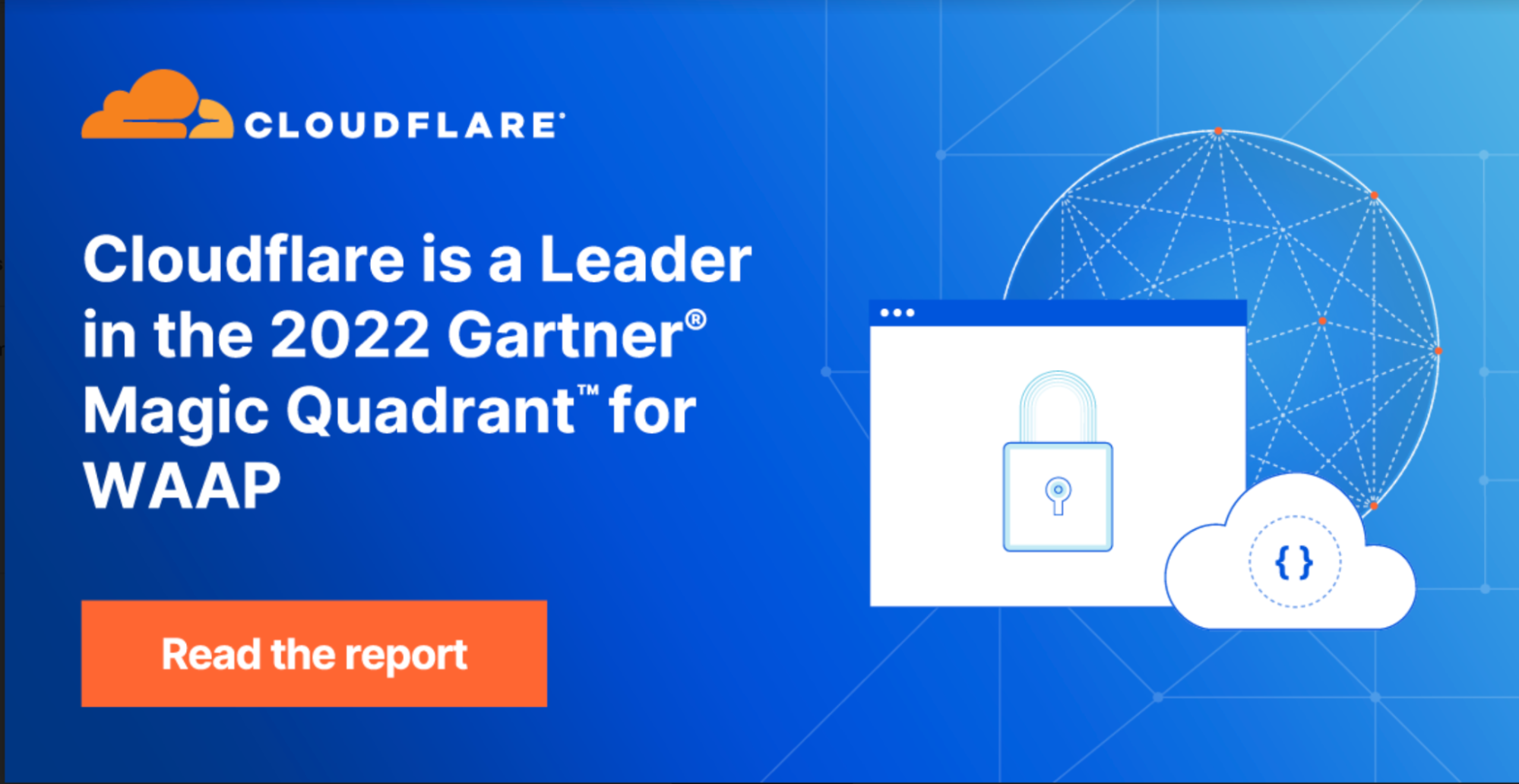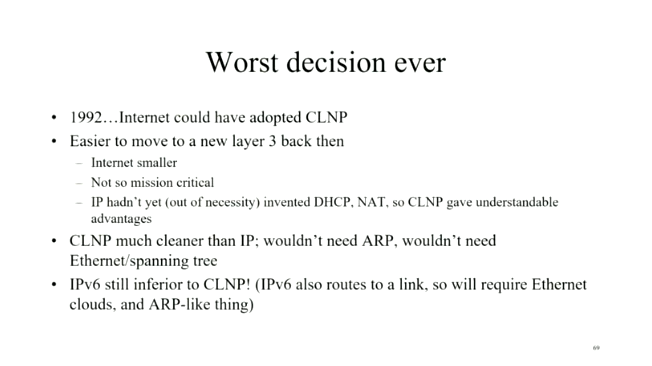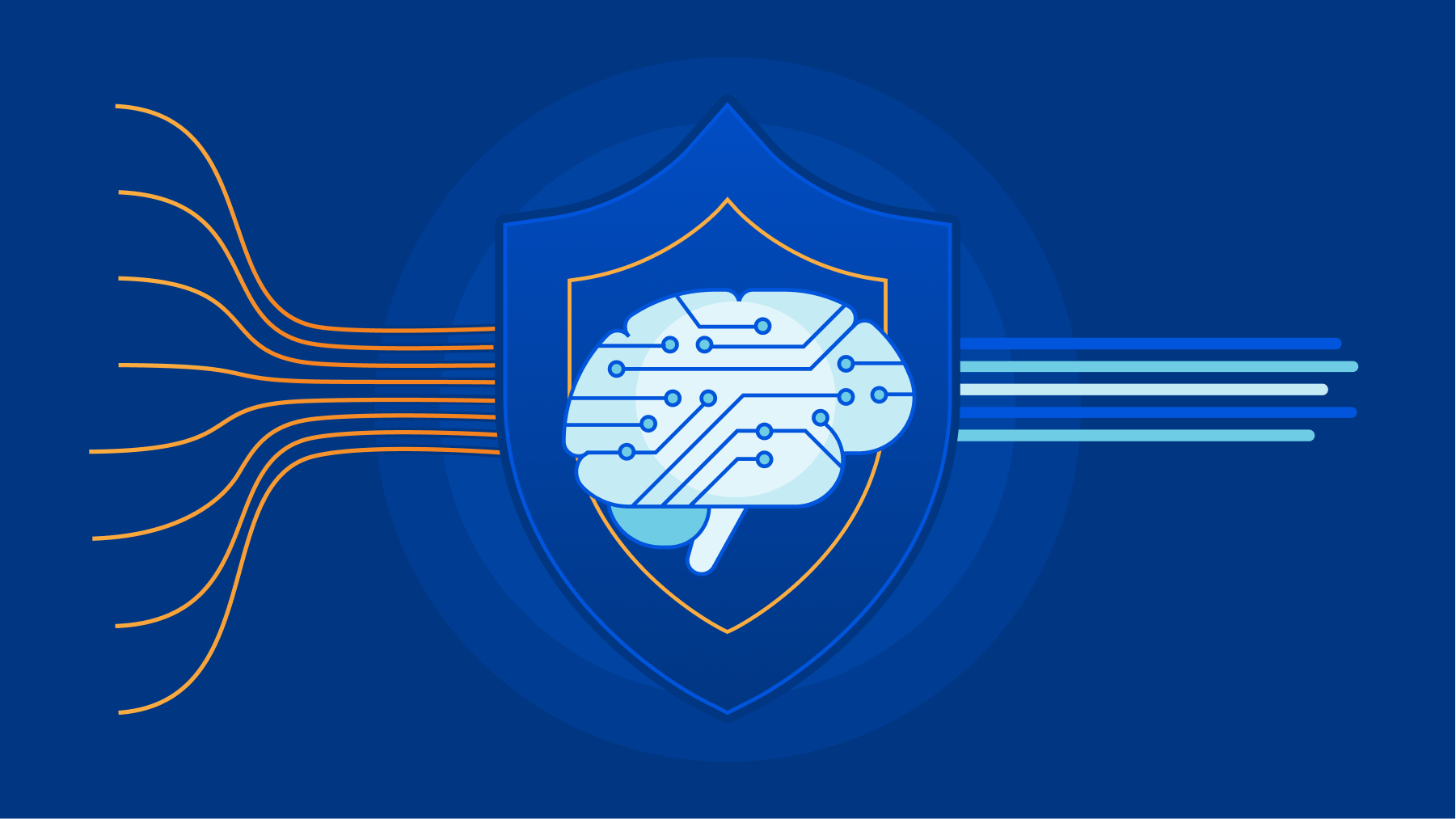Cloudflare named a Leader by Gartner


Gartner has recognised Cloudflare as a Leader in the 2022 "Gartner® Magic Quadrant™ for Web Application and API Protection (WAAP)" report that evaluated 11 vendors for their ‘ability to execute’ and ‘completeness of vision’.
You can register for a complimentary copy of the report here.
We believe this achievement highlights our continued commitment and investment in this space as we aim to provide better and more effective security solutions to our users and customers.
Keeping up with application security
With over 36 million HTTP requests per second being processed by the Cloudflare global network we get unprecedented visibility into network patterns and attack vectors. This scale allows us to effectively differentiate clean traffic from malicious, resulting in about 1 in every 10 HTTP requests proxied by Cloudflare being mitigated at the edge by our WAAP portfolio.
Visibility is not enough, and as new use cases and patterns emerge, we invest in research and new product development. For example, API traffic is increasing (55%+ of total traffic) and we don’t expect this trend to slow down. To help customers with these new workloads, our API Gateway builds upon our WAF to provide better visibility and mitigations for well-structured API traffic for Continue reading
Tier 1 Carriers Performance Report: August, 2022
The post Tier 1 Carriers Performance Report: August, 2022 appeared first on Noction.
Network Break 397: VMware Aria Sings Multicloud Management; NVIDIA Ordered To Stop Selling AI Chips To China
This week's Network Break podcast tackles space weather, new products from VMware, a significant firewall vulnerability, an order barring NVIDIA from selling certain chips to China, and more tech news.
The post Network Break 397: VMware Aria Sings Multicloud Management; NVIDIA Ordered To Stop Selling AI Chips To China appeared first on Packet Pushers.
Network Break 397: VMware Aria Sings Multicloud Management; NVIDIA Ordered To Stop Selling AI Chips To China
This week's Network Break podcast tackles space weather, new products from VMware, a significant firewall vulnerability, an order barring NVIDIA from selling certain chips to China, and more tech news.Natural Vitamins to Help You Stay Alert
When it comes to staying alert throughout the day, many people turn to caffeine or sugary snacks for a quick energy boost. However, these foods can cause spikes and drops in blood sugar that ultimately lead to feelings of fatigue and low energy. To help keep you feeling energized and focused throughout the day, consider incorporating natural vitamins into your diet.
Vitamins That Help Promote Alertness
There are many vitamins that keep you feeling awake and energized. Here are a few of the most effective supplements to try:
Vitamin B6
The B vitamins are key for supporting brain health, and vitamin B6 in particular is known for its ability to help boost energy levels. This nutrient helps increase the production of the neurotransmitter serotonin, which promotes feelings of calm and well-being. It can also help improve sleep quality, making it an excellent choice for those who struggle with fatigue and low energy levels.
Iron
Iron is another essential nutrient that helps support brain health and energy levels. It plays an important role in the production of red blood cells, which are responsible for carrying oxygen throughout the body and to the brain. When your blood is low in Continue reading
Service Mesh And Ingress In Kubernetes: Lesson 2 – Ingress Fundamentals -Video
This video demonstrates installing an ingress controller, looks at different controller options, and provides some background on why you might want to use an ingress controller in a Kubernetes cluster. Michael Levan brings his background in system administration, software development, and DevOps to this video series. He has Kubernetes experience as both a developer and […]
The post Service Mesh And Ingress In Kubernetes: Lesson 2 – Ingress Fundamentals -Video appeared first on Packet Pushers.
Was IPv6 Really the Worst Decision Ever?
A few weeks ago, Daniel Dib tweeted a slide from Radia Perlman’s presentation in which she claimed IPv6 was the worst decision ever as we could have adopted CLNP in 1992. I had similar thoughts on the topic a few years ago, and over tons of discussions, blog posts, and creating the How Networks Really Work webinar slowly realized it wouldn’t have mattered.

Was IPv6 Really the Worst Decision Ever?
A few weeks ago, Daniel Dib tweeted a slide from Radia Perlman’s presentation in which she claimed IPv6 was the worst decision ever as we could have adopted CLNP in 1992. I had similar thoughts on the topic a few years ago, and over tons of discussions, blog posts, and creating the How Networks Really Work webinar slowly realized it wouldn’t have mattered.

AWS Static Website with Pulumi
Are you tired of pointing and clicking your way through the AWS console to build out your AWS services? Me too! Fear not my lovely adventurers, in this post I will show you how to use the fantastic Infrastructure as Code (IaC) tool Pre-Flight Check The environment will need to be setup...continue reading
Ensuring Data Access with a Distributed Cloud Architecture
In distributed cloud environments, organizations need to be able to manage, access, and protect their data, regardless of where the data is created or stored.Improving the accuracy of our machine learning WAF using data augmentation and sampling


At Cloudflare, we are always looking for ways to make our customers' faster and more secure. A key part of that commitment is our ongoing investment in research and development of new technologies, such as the work on our machine learning based Web Application Firewall (WAF) solution we announced during security week.
In this blog, we’ll be discussing some of the data challenges we encountered during the machine learning development process, and how we addressed them with a combination of data augmentation and generation techniques.
Let’s jump right in!
Introduction
The purpose of a WAF is to analyze the characteristics of a HTTP request and determine whether the request contains any data which may cause damage to destination server systems, or was generated by an entity with malicious intent. A WAF typically protects applications from common attack vectors such as cross-site-scripting (XSS), file inclusion and SQL injection, to name a few. These attacks can result in the loss of sensitive user data and damage to critical software infrastructure, leading to monetary loss and reputation risk, along with direct harm to customers.
How do we use machine learning for the WAF?
The Cloudflare ML solution, at a high level, Continue reading
netlab Release 1.3: VXLAN and EVPN
netlab release 1.3 contains two major additions:
- VXLAN transport using static ingress replication or EVPN control plane – implemented on Arista EOS, Cisco Nexus OS, Dell OS10, Nokia SR Linux and VyOS.
- EVPN control plane supporting VXLAN transport, VLAN bridging, VLAN-aware bundles, and symmetric IRB – implemented on Arista EOS, Dell OS10, Nokia SR Linux, Nokia SR OS (control plane), VyOS, and FRR (control plane).
Here are some of the other goodies included in this release:
netlab Release 1.3: VXLAN and EVPN
netlab release 1.3 contains two major additions:
- VXLAN transport using static ingress replication or EVPN control plane – implemented on Arista EOS, Cisco Nexus OS, Dell OS10, Nokia SR Linux and VyOS.
- EVPN control plane supporting VXLAN transport, VLAN bridging, VLAN-aware bundles, and symmetric IRB – implemented on Arista EOS, Dell OS10, Nokia SR Linux, Nokia SR OS (control plane), VyOS, and FRR (control plane).
Here are some of the other goodies included in this release:
Is VLAN 1 Special in Cisco Networks?
I got asked why we change from VLAN 1 to another VLAN in Cisco networks. What is bad with the default setup? Is VLAN 1 really magical in a Cisco network?
When Cisco ships a Catalyst switch to you, there is no configuration provided. This means that all the ports will be access ports and the only VLAN that exists is VLAN 1. Now, we’ve all seen networks that keep it like this. Everything is one big flat network and the only VLAN in use is VLAN 1. If this is a bad configuration depends on several factors, including the size of the network, but let’s take a look at some of the drawbacks to maintaining this configuration:
- No segmentation – There is no segmentation. Every user can access every other user and anything else in the VLAN such as infrastructure, servers, IoT type devices, and so on
- Default access – The user gets access simply by connecting their PC to the switch which may not be the desired outcome
- Management access – Related to the first bullet point, if the switch has a management IP in VLAN 1, the user may be able to access and login to the Continue reading